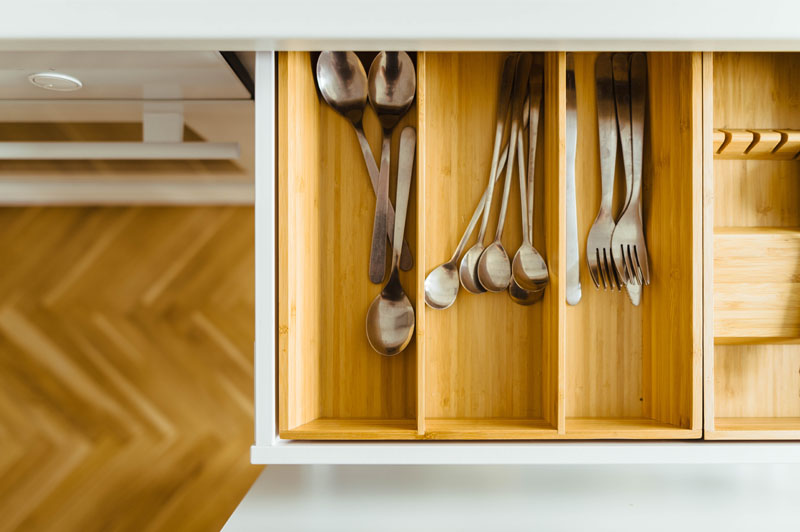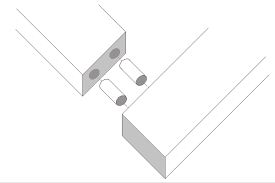
When you’re searching for “Dowel Joint Pros & Cons” you’re likely doing some home improvement or building a new home. Dowel joints are a common type of wood joint that is used in cabinetry. When built by skilled craftsmen they create a secure joint that will last for many years. One of the most common areas in kitchen and bathroom cabinetry for dowel joints is in the fabrication of drawers.
What Is A Dowel Joint?
A dowel joint is a wood joinery technique that joins two or more sections of wood together. It is done by drilling holes in the sections of wood that line up and securing them together with a wooden dowel. Many times it is reinforced by adding high strength wood glue.

Dowel Joint Pros
Dowel joints have a number of excellent pros that make them a popular option for many woodworkers and homeowners. They provide a secure joint for woodworking that doesn’t have metal fasteners, is simple to assemble, and is versatile.
No Screws, Nails, or Staples
Wood joints that are made with nails, screws, or staples leave the surface of the wood marred. A dowel joint is typically hidden in a way that you’ll see nothing but the beautiful grain of your wood or color of melamine.
Secure Wood Joinery
When the dowel joint is made properly it has an incredibly tight fit and provides a long lasting durable joint. This is done by using professional woodworking equipment, the right size dowel, and wood glue
Versatile Joint Type
A dowel joint can be made in wood or other materials and join sections of material at a flat or right angle. This makes them the perfect option for many projects and especially cabinetry projects.
Simple Assembly
Once the dowel joint prep is done by drilling corresponding holes in the sections of wood assembly is simple. It is done by simply using a rubber mallet to gently tap the dowels into the first wood section and then lining up the holes in the second section and gently tapping it together.
Dowel Joint Cons
There are two main cons to dowel joints, they can be hard for beginners to make and dowels are not as strong as a dovetail joint or a mortise and tenon joint.
Shearing Dowels
Dowels in cabinetry are generally fairly small in diameter. They are limited in size due to the thickness of the wood sections they are meant to join. This means that if excessive weight is applied to the joint the wood dowel can shear. A dovetail joint uses the entire edge of the wood sections to securely join them and provide an exceptionally strong wood joint.
Misaligned Dowels
For new woodworkers or DIY homeowners dowel joints can be frustrating to make. Without the right measurements, size of dowel, and tools they can be hard to make. Worst of all they can be made and just not last and fall apart.
Conclusion
Dowel joints are an excellent option for wood joinery for projects that don’t have the budget for dovetail joints or mortise and tenon joints. They are best made by professional woodworkers with the tools and training to make them last.